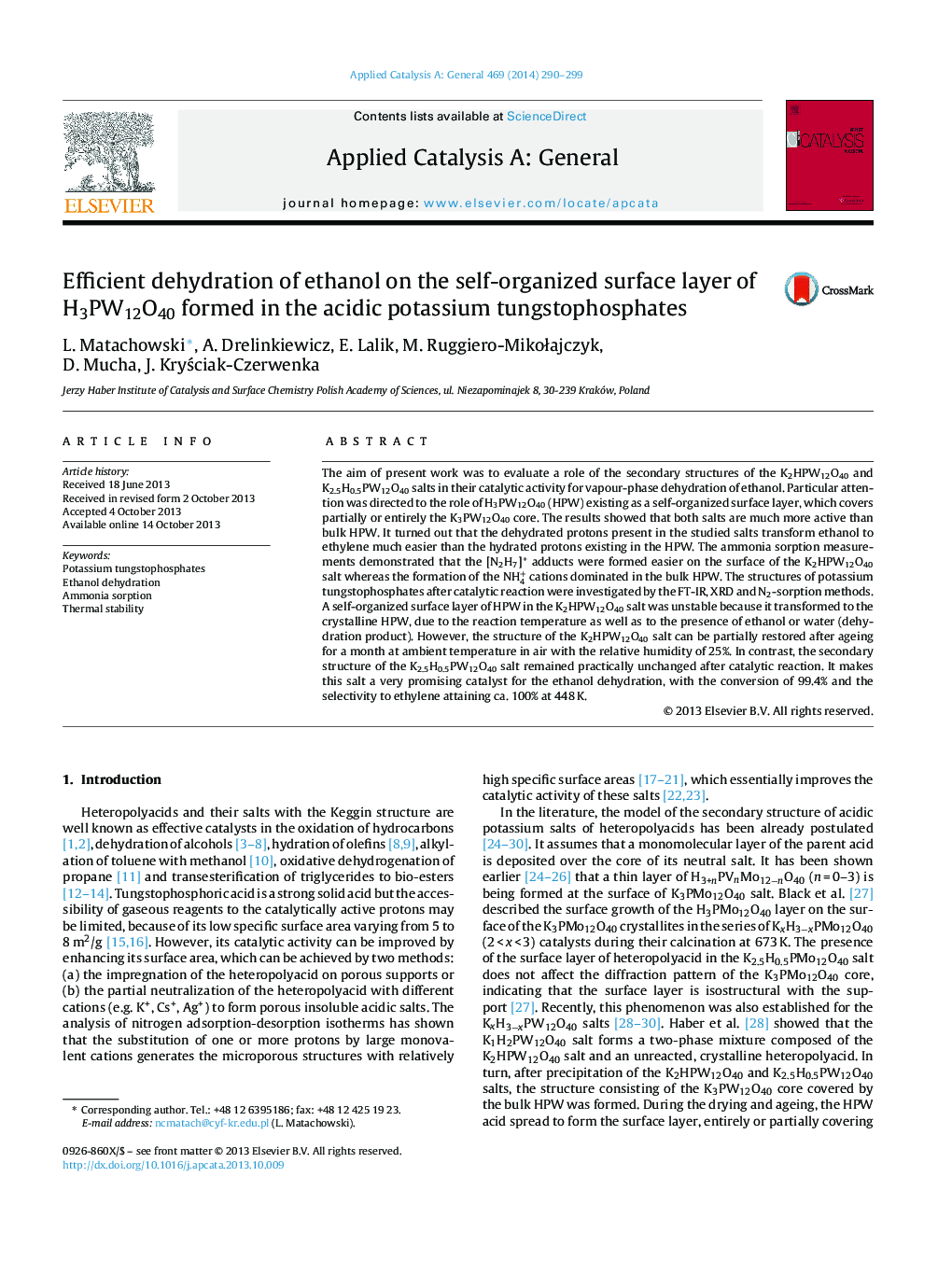| کد مقاله | کد نشریه | سال انتشار | مقاله انگلیسی | نسخه تمام متن |
|---|---|---|---|---|
| 40179 | 45845 | 2014 | 10 صفحه PDF | دانلود رایگان |

• Surface layer of HPW in K2 and K2.5 salts exhibits higher reactivity than bulk HPW.
• Dehydrated protons transform ethanol to ethylene much easier than hydrated protons.
• The [N2H7]+ are mostly formed on dehydrated protons while the NH4+ on hydrated ones.
• Secondary structure of K2.5 salt is thermally stable in contrast to that of K2 salt.
The aim of present work was to evaluate a role of the secondary structures of the K2HPW12O40 and K2.5H0.5PW12O40 salts in their catalytic activity for vapour-phase dehydration of ethanol. Particular attention was directed to the role of H3PW12O40 (HPW) existing as a self-organized surface layer, which covers partially or entirely the K3PW12O40 core. The results showed that both salts are much more active than bulk HPW. It turned out that the dehydrated protons present in the studied salts transform ethanol to ethylene much easier than the hydrated protons existing in the HPW. The ammonia sorption measurements demonstrated that the [N2H7]+ adducts were formed easier on the surface of the K2HPW12O40 salt whereas the formation of the NH4+ cations dominated in the bulk HPW. The structures of potassium tungstophosphates after catalytic reaction were investigated by the FT-IR, XRD and N2-sorption methods. A self-organized surface layer of HPW in the K2HPW12O40 salt was unstable because it transformed to the crystalline HPW, due to the reaction temperature as well as to the presence of ethanol or water (dehydration product). However, the structure of the K2HPW12O40 salt can be partially restored after ageing for a month at ambient temperature in air with the relative humidity of 25%. In contrast, the secondary structure of the K2.5H0.5PW12O40 salt remained practically unchanged after catalytic reaction. It makes this salt a very promising catalyst for the ethanol dehydration, with the conversion of 99.4% and the selectivity to ethylene attaining ca. 100% at 448 K.
Figure optionsDownload high-quality image (166 K)Download as PowerPoint slide
Journal: Applied Catalysis A: General - Volume 469, 17 January 2014, Pages 290–299